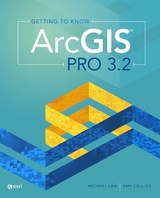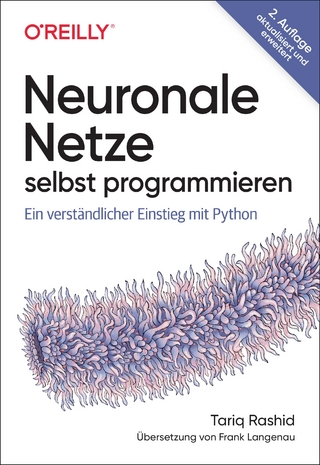
Getting to Know ArcGIS Pro 2.8
Environmental Systems Research Institute Inc.,U.S. (Verlag)
978-1-58948-701-7 (ISBN)
Getting to Know ArcGIS Pro 2.8 introduces the tools and functions of ArcGIS Pro, the powerful desktop GIS application. Geographic information system (GIS) software is making a huge impact in businesses and organizations with mapping and analytic capabilities.
Getting to Know ArcGIS Pro 2.8 uses practical project workflows to teach best practices to readers of all skill levels. Readers will explore data visualizations, build a geodatabase, discover 3D GIS, create maps for web and physical presentations, and more. With more than 300 full-color images, Getting to Know ArcGIS Pro 2.8 clarifies complicated processes such as developing a geoprocessing model, using Python to write a script tool, and creating space-time cubes for analysis.
Throughout the book, short sidebars about real-world GIS scenarios in specific industries help readers understand how ArcGIS Pro can be applied widely to solve problems. At the end of each chapter, a summary and glossary help reinforce the skills learned.
This edition has been completely updated for use with ArcGIS Pro 2.8. Other updates include new chapters on ArcGIS Online and geocoding.
The Getting to Know series has been teaching readers about GIS for more than twenty years. Ideal for students, self-learners, and professionals who want to learn the premier GIS desktop application, Getting to Know ArcGIS Pro 2.8 is a textbook and desk reference designed to show users how they can use ArcGIS Pro successfully on their own.
Michael Law is a cartographer and GIS professional with over sixteen years of experience. He and Amy Collins previously updated Getting to Know ArcGIS Desktop 10.8. Amy Collins is a writer and editor who lives in Northern California. She and Michael Law previously updated Getting to Know ArcGIS Desktop 10.8.
Contents
Preface
Chapter 1 Introducing GIS
Exercise 1a: Explore ArcGIS Online
Chapter 2 A first look at ArcGIS Pro
Exercise 2a: Learn some basics
Exercise 2b: Go beyond the basics
Exercise 2c: Experience 3D GIS
Chapter 3 Exploring geospatial relationships
Exercise 3a: Extract part of a dataset
Exercise 3b: Incorporate tabular data
Exercise 3c: Calculate data statistics
Exercise 3d: Connect spatial datasets
Chapter 4 Creating and editing spatial data
Exercise 4a: Build a geodatabase
Exercise 4b: Create features
Exercise 4c: Modify features
Chapter 5 Facilitating workflows
Exercise 5a: Manage a repeatable workflow using tasks
Exercise 5b: Create a geoprocessing model
Exercise 5c: Run a Python command and script tool
Chapter 6 Collaborative mapping
Exercise 6a: Prepare a database for data collection
Exercise 6b: Prepare a map for data collection
Exercise 6c: Collect data using ArcGIS Collector
Chapter 7 Geoenabling your project
Exercise 7a: Prepare project data
Exercise 7b: Geocode location data
Exercise 7c: Use geoprocessing tools to analyze vector data
Chapter 8 Analyzing spatial and temporal patterns
Exercise 8a: Create a kernel density map
Exercise 8b: Perform a hot spot analysis
Exercise 8c: Explore the results in 3D
Exercise 8d: Animate the data
Chapter 9 Determining suitability
Exercise 9a: Prepare project data
Exercise 9b: Derive new surfaces
Exercise 9c: Create a weighted suitability model
Chapter 10 Presenting your project
Exercise 10a: Apply detailed symbology
Exercise 10b: Label features
Exercise 10c: Create a page layout
Exercise 10d: Share your project
Appendix Image and data source credits
Data license agreement
Glossary
| Erscheinungsdatum | 01.07.2021 |
|---|---|
| Zusatzinfo | screenshots and maps |
| Verlagsort | Redlands |
| Sprache | englisch |
| Maße | 190 x 234 mm |
| Themenwelt | Schulbuch / Wörterbuch |
| Informatik ► Datenbanken ► Data Warehouse / Data Mining | |
| Naturwissenschaften ► Geowissenschaften ► Geografie / Kartografie | |
| ISBN-10 | 1-58948-701-X / 158948701X |
| ISBN-13 | 978-1-58948-701-7 / 9781589487017 |
| Zustand | Neuware |
| Informationen gemäß Produktsicherheitsverordnung (GPSR) | |
| Haben Sie eine Frage zum Produkt? |
aus dem Bereich



